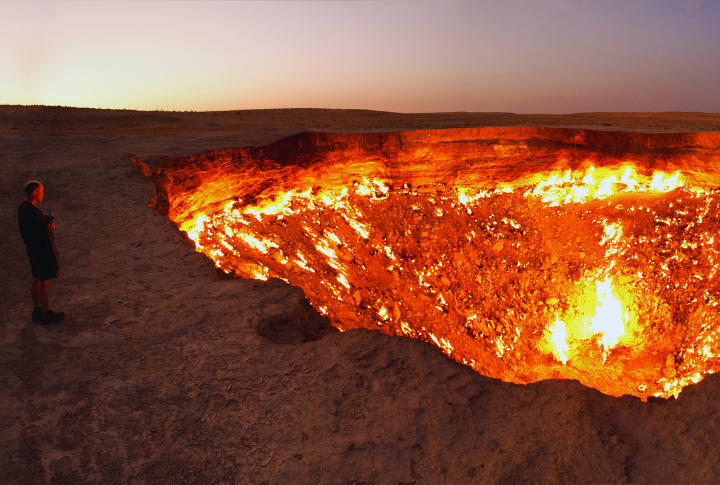
Throughout history, humans have been fascinated by the concept of eternal flames—natural fires that seem to burn indefinitely, defying the laws of nature and logic. These flames have sparked myths, religious beliefs, and scientific curiosity. Let’s look at some of the world’s most enigmatic eternal flames, each with its own story and origin.
Eternal Flame Falls, New York, USA
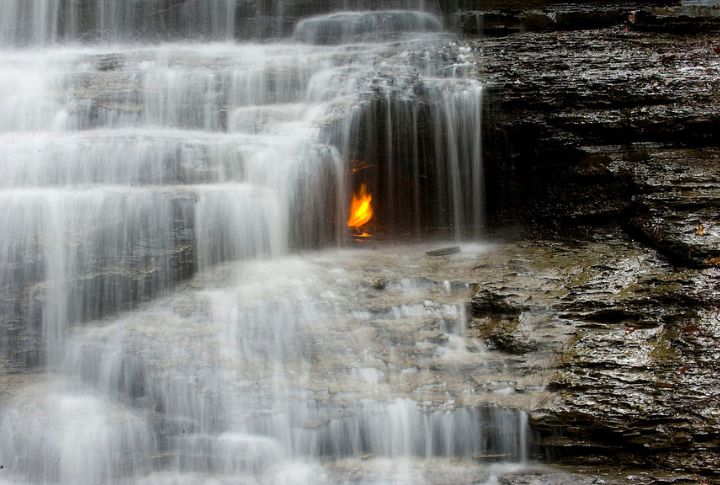
Located at Chestnut Ridge Park, the Eternal Flame Falls is a small yet captivating flame that burns behind a 35-foot waterfall. This flame is fueled by methane gas seeping from the Earth and can sometimes be extinguished by water. Locals also believe that the flame has mystical healing powers.
Chimera, Olympos National Park, Turkey
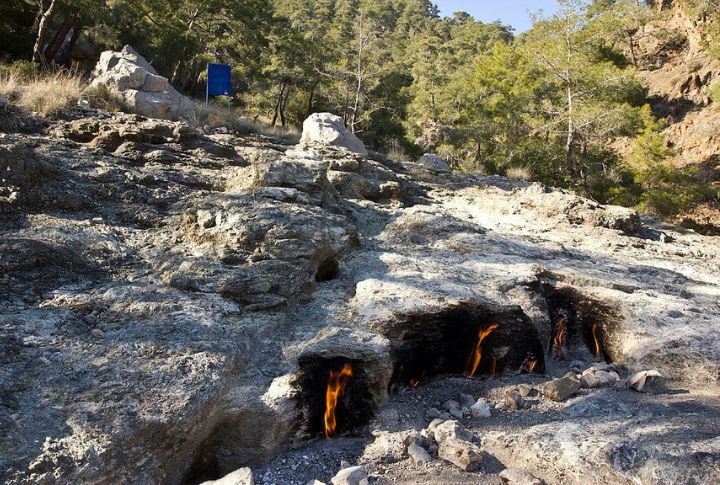
The Chimera flames, known as Yanartaş, are a series of small flames that have been burning for over 2,500 years on the slopes of Mount Olympos. Steeped in Greek, legend has it that these flames are the breath of the mythical Chimera, a creature described as part lion, goat, and snake.
https://en.wikipedia.org/wiki/Yanarta%C5%9F
Darvaza Gas Crater, Turkmenistan
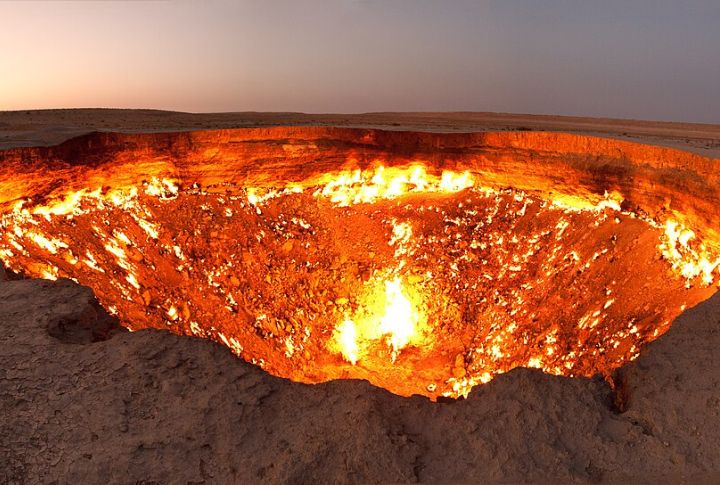
Famously called the Gates of Hell, the Darvaza Gas Crater is a striking eternal flame, burning since the 1980s. About 70 meters wide and 30 meters deep, this natural wonder was ignited by Soviet engineers to contain methane gas after a drilling mishap, and it’s been blazing ever since.
https://en.wikipedia.org/wiki/Darvaza_gas_crater
Guanziling, Taiwan
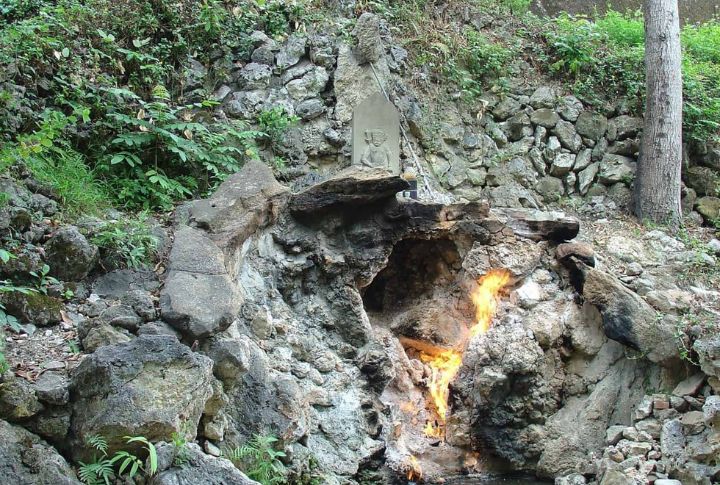
The Fire and Water Spring in Guanziling is a unique eternal flame that burns near a hot spring. According to a local legend, a monk discovered this flame in the 18th century. This is said to be fueled by the urine of a mythical creature called a Kirin.
Guanziling’s Hot Springs

The flame of Guanziling is a natural wonder that plays a significant role in local culture by attracting visitors who come to witness its unusual combination of fire and water. Thanks to its therapeutic hot springs, the site is also known as a popular destination for relaxation and healing.
https://en.wikipedia.org/wiki/Guanziling_Hot_Spring.
Murchison, New Zealand
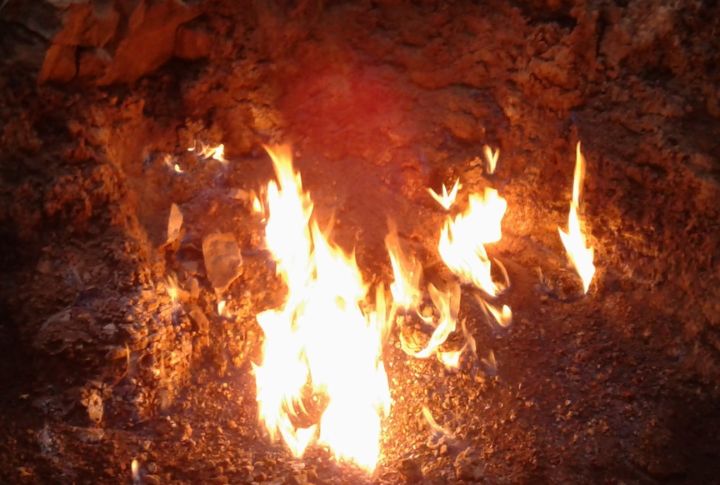
In the small village of Murchison, the Gas Blows is a small eternal flame that has been burning since the 1920s. The flame was ignited accidentally by a hunter who threw a match into a gas leak. This smokeless flame continues to burn, while locals consider it a quirky attraction.
https://www.bbc.com/travel/article/20150810-new-zealands-never-ending-fire.
Muktinath, Nepal

A perpetual flame believed to have been lit by God Brahma, the sacred site of Muktinath is revered by Hindus and Buddhists. This flame is part of a larger pilgrimage circuit that symbolizes purification. Muktinath is a holy destination for spiritual seekers.
https://www.holidaystonepal.in/muktinath-temple
Jharia Coal Fields, India
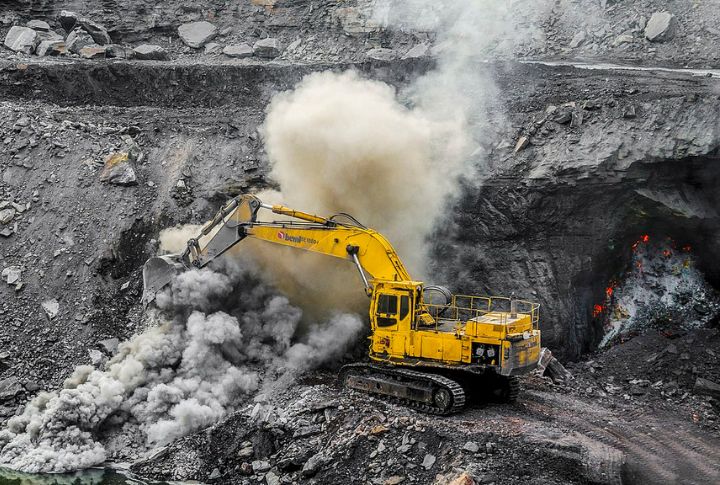
Situated in Jharkhand, India, Jharia is an active mining area plagued by underground coal seam fires. These fires have been burning for decades and sometimes burst through the surface, creating dangerous conditions for the local population. Despite the peril, these flames are the region’s identity.
Yanar Dağ, Azerbaijan
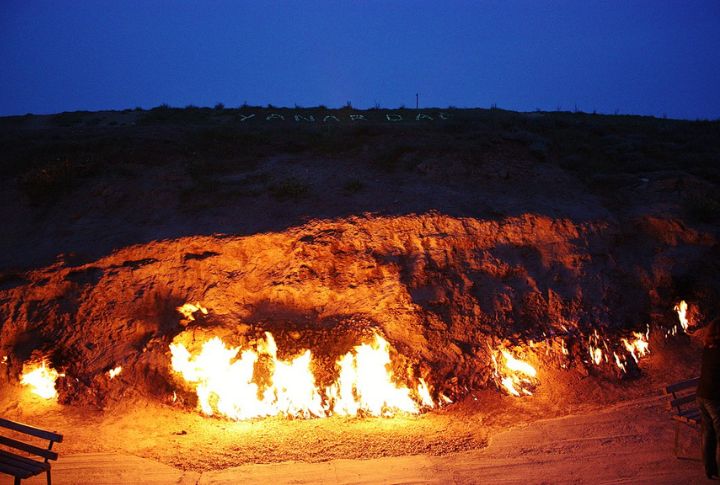
Yanar Dağ, or “Burning Mountain,” is Azerbaijan’s blazing natural gas fire. Fueled by gas seeping from a porous sandstone layer, its flames can reach impressive heights. The site holds historical significance and is associated with ancient fire worship. It contributes to Azerbaijan’s nickname, the “Land of Fire.”
https://en.wikipedia.org/wiki/Yanar_Dagh%20.%20https://marcomontielsoto.com/news/2998/
Centralia, Pennsylvania, USA
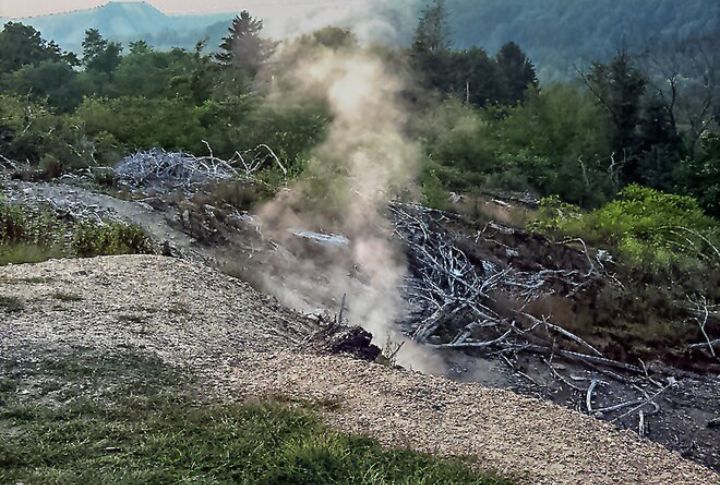
Centralia is famous for its underground coal seam fire, which has been burning since 1962. The fire, which extends nearly 10 miles underground, was accidentally ignited, and the town has since become a ghost town due to the hazardous conditions. Today, the site attracts curious visitors.
https://en.wikipedia.org/wiki/Centralia_mine_fire
Erta Ale, Ethiopia
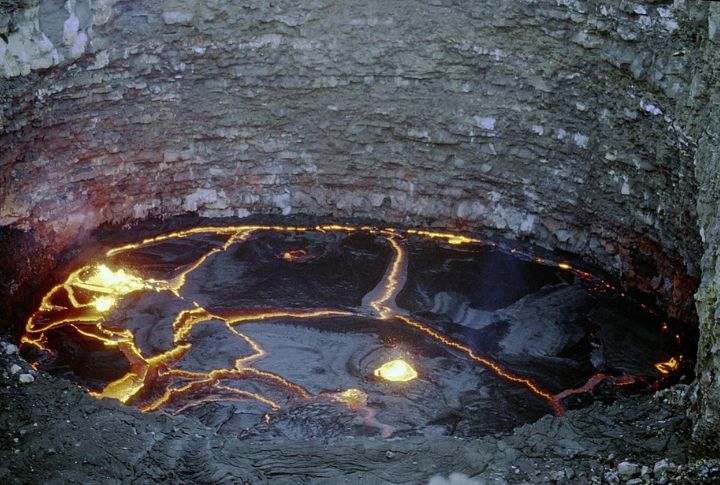
Located in the Afar Depression, this active volcano has been studied for decades and is recognized for its exceptional geological features. The Erta Ale volcano is one of Earth’s most impressive eternal flames. It features a near-constant lava lake with bubbling lava and glowing flames.
https://en.wikipedia.org/wiki/Erta_Ale
Blue Fire, Ijen, Indonesia
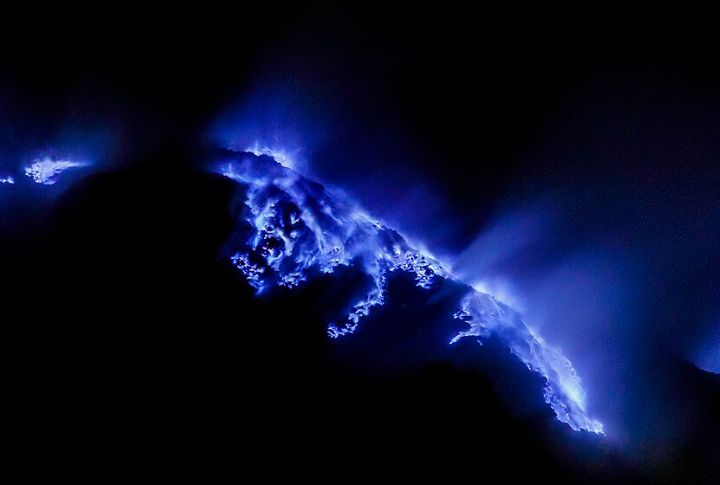
The Blue Fire at the Ijen volcano is caused by the combustion of sulfur gases, creating mesmerizing electric-blue flames. This rare sight attracts adventurous travelers who want to witness nature’s fiery display in stunning scenery. The flames reflect the region’s geothermal activity.
https://en.wikipedia.org/wiki/Ijen
Hiroshima Peace Memorial Park, Japan
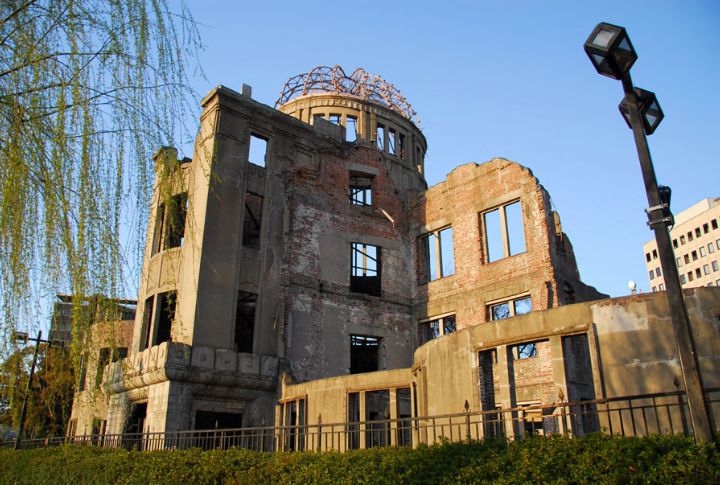
Lit in 1964, the flame of Hiroshima Peace Memorial Park burns to date to serve as an essential reminder of the tragedy that devastated Hiroshima in 1945. The flame represents the commitment to peace and the desire to prevent such tragedies from occurring again.
https://en.wikipedia.org/wiki/Hiroshima_Peace_Memorial_Park
Lumbini, Nepal
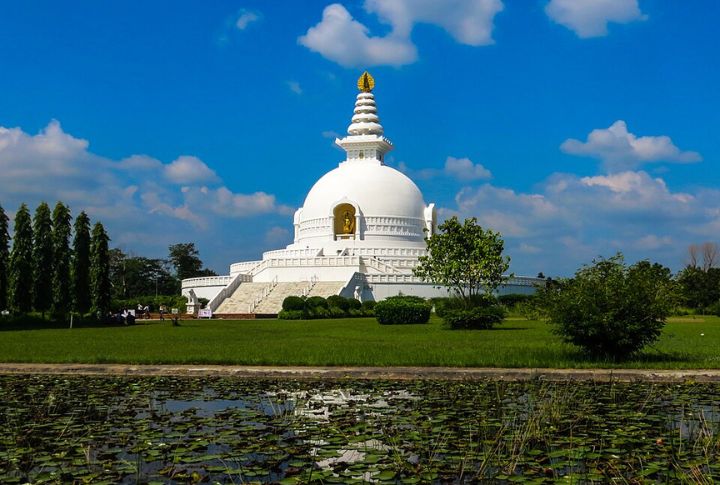
The birthplace of Buddha has been bursting with flame since it was lit in 1986 as a commemoration of the International Year of Peace. The Eternal Peace Flame in Lumbini stands for peace, compassion, understanding, and enlightenment. The site attracts many visitors from around the world.
https://enlightenmentthangka.com/blogs/thangka/lumbini-the-birthplace-of-lord-buddh
Kayangan Api, Indonesia
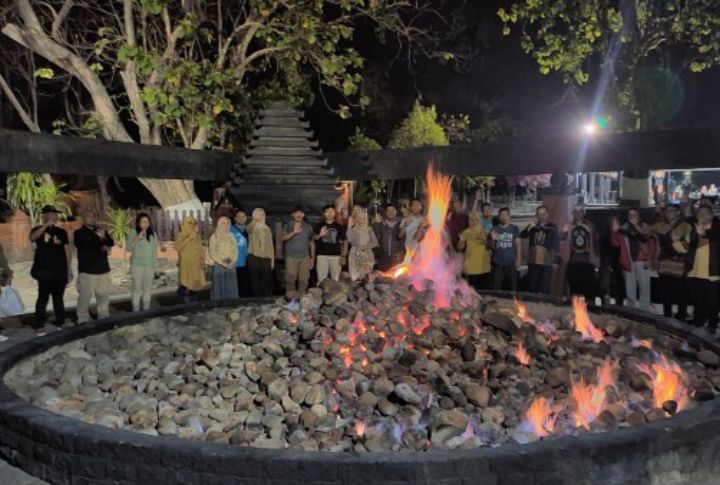
This flame holds cultural significance and is often featured in local rituals. The Kayangan Api in East Java is another undying flame that has blazed since the Majapahit Kingdom era. The site is proof of the region’s rich history and the connection between the people and their spiritual beliefs.
https://en.wikipedia.org/wiki/Eternal_flame

